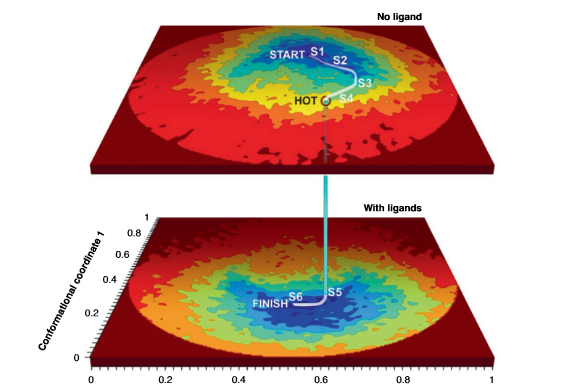
- Details
- Tuesday, 25 January 2022

The splendid computational success of AlphaFold and RoseTTAFold in solving the 60-year-old problem of protein folding raises an obvious question: what new avenues should structural biology explore? We propose a strong pivot toward the goal of reading mechanism and function directly from the amino acid sequence.
This ambitious goal will require new data analytical tools and an extensive database of the atomic-level structural trajectories traced out on energy landscapes as proteins perform their function.
Authors: Abbas Ourmazd, Keith Moffat and Eaton Edward Lattman
We have a confession to make. Not long ago, we were skeptical that the accurate structure of a fully folded protein could be deduced computationally from its amino acid sequence. The spectacular success of AlphaFold and RoseTTAFold algorithms in determining the fully folded structure of proteins from their amino acid sequence, often to high accuracy, has eliminated any doubt.
This delightful success is the culmination of four decades-long efforts: (1) deposition of more than 170,000 experimentally determined protein structures in the openly accessible Protein Databank; (2) deposition of a large number of amino acid sequences of entire families of proteins and their evolutionary relationships in public repositories; (3) elucidation of multiple sequence alignments; and (4) the resurgence of neural-inspired machine-learning algorithms. This resurgence constitutes an impressive demonstration of the power of sophisticated deep learning. In brief, AlphaFold 2 consists of a module for extracting information from so-called multisequence alignments to gain insight into segments of the studied protein. This module operates in tandem with a second that is able to build a model of the protein structure, including the side-chains.
Does this success mean that structural biology, as an experimental discipline, is ‘solved’? Can we, in good conscience, continue to ask our students and young collaborators to spend months, if not years, determining protein structures? Or is the heyday of protein structure determination finally over? As with any success, it is important to ask what is next.
Read the full article here.
